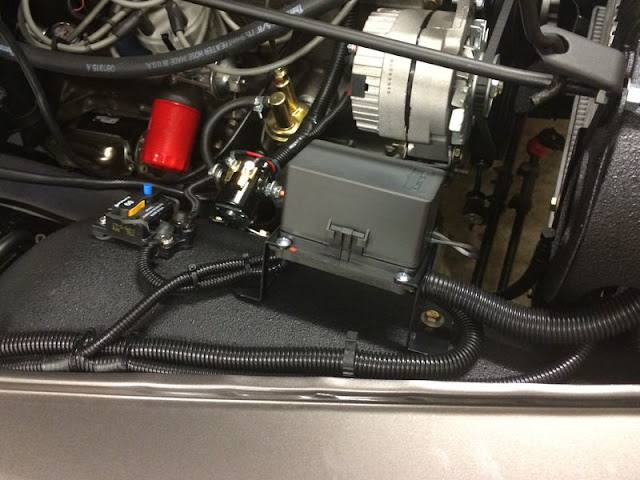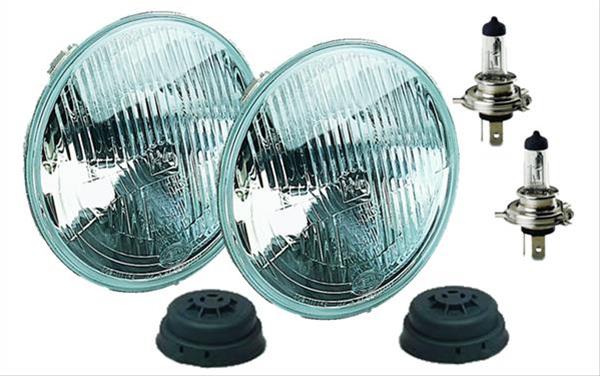This includes the wiring to upgrade to H4 headlights.
Decided to add a Cooper Bussmann relay box to the CJ in order to upgrade to H4 lighting, upgrade the horn, install a new amp behind the dash, and provide for future upgrade to heated seats.
After thinking about adding individual relays, I happened upon the Cooper Bussmann relay box from a
guy on ebay who sells them with the relays and wiring tails already installed. I sent him a request to extend all the tails to 10 feet and make one of them 10 gauge instead of his usual 12 gauge (this was for the amp). This unit is equipped with five 30 amp switched relays and five unswitched 15 amp circuits.
Misc. parts assembled for upgrade (wire, loom, loom stays, bluetooth amp, horn, relay box, 60 amp circuit breaker, distribution busses, terminals, etc.).
Didn't want the amp seen (or easily stolen) nor did I need a stereo head unit. I wanted to use iTunes on an iPhone via bluetooth to control the music. I fabricated these brackets from some aluminum channel in order to mount the amp between the dash and the firewall.
Here are the amp and brackets mounted. There is a spot between the heater vent and the control knob cables that just allows this Kenwood KAC-M1824BT, 400 watt amp, to fit.
Relay box and 60 amp circuit breaker mounted to passenger fender.
Relay box and 60 amp circuit breaker mounted to passenger fender. The relay box came with a 60 amp fuse, but if something ever failed I don't think I'd be able to find a 60 amp fuse (nor would I want to fool with it on the side of the road) so I went with the breaker. Power comes directly from the battery via the starter solenoid. Ground comes directly from the battery.
Inside the Cooper Bussmann box. I removed the five unswitched fuses and wiring to reduce bulk and clutter. I can add them back when, and if, needed.
Bought an air ooga horn from Harbor Freight for $11, drilled a new hole in the fender and ran the wire from the relay behind the grill with the headlight wiring.
All of the wiring for the lights from the existing fusebox run by the horn in the loom. From there I spliced new wire onto the low beam, high beam, and horn wires and ran them behind the grill and over to the relays. Then ran the power from the relays back via the same route.
Eventually, the Hella H4 headlights will go in. I've also included the best value LED headlight info from Auxbeam. Ultimately, the LED lights look too modern for the CJ.
I used new ceramic headlight connectors that are abundant on ebay.
Added a battery disconnect as a precaution. You can just see a coupling nut attached to the heater bolt as a stand-off for the battery negative wire coming to the firewall. Decided to use this stand-off idea instead of the distribution busses.
Drilled a hole in the firewall in order to run the power leads to the amp and heated seats. Used a grommet in the firewall to protect the wires.
Cut a hole for, and mounted the amp remote control pad to the radio blanking plate. The mounting pins on the blanking plate broke off so I drilled them out and mounted it with buttonhead stainless bolts. The iPhone mounts via a RAM Mount in one of the existing dash mounting bolt locations. Also added a dual 2.1 amp USB charging port where the old cig. lighter used to be. This is intended to keep both of our phones charged while out for extended periods.
I've never done any automotive wiring, but am generally good with electrical, so after some research here and elsewhere, decided this was a good way to get this job done.
If you have suggestions for improvements, let me know. It could help the next guy.













































